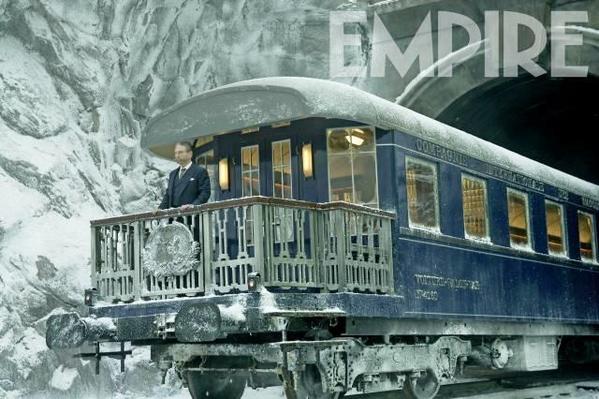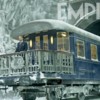I just watched Genius, a reasonably good movie about the difficult relationship between editor Maxwell Perkins and writer Thomas Wolfe, in which the set director obsessively and accuirately rendered every minute visual cue of the years between 1929 and about 1933 in exquisite detail, including correct period clothing, automobiles, buildings, images of NYC skyline, apartment interiors, lamp shades, neck ties, refrigerators, shoes, suits, shirts, hair styles, restaurants, taxi cabs, manual typewriters, Harlem jazz clubs, and on and on. But with one glaring and pointless exception, as follows.
Editor Max Perkins lives in New Canaan, CT, and commutes to his work at Charles Scribner's Sons in Manhattan by way of New Haven and New York Central into Grand Central Terminal, which is accurately depicted in the film. However, Max is regularly shown entering GCT, then walking out to a platform and boarding what appears to be vintage English coaching stock pulled by an English steam locomotive spewing smoke under a glass-roofed train shed implicitly in the heart of Manhattan! Despite slavish attention to period detail in all other aspects of this film, the producers/designers seem to have no clue that GCT was electrified decades earlier, and choose instead to depict steam engines leaving Grand Central Terminal in 1929, apparently because they thought it would make the film more "nostalgic."
I suppose this kind of egregious historical error, or misrepresentation, in a film that is otherwise quite accurate in its visual depiction of the late 1920s - early 1930s simply shows that most people know nothing at all about American railroads and their history. These kinds of errors are repeated again and again in both Hollywood productions and so-called documentary productions.
Why can't the producers, directors, set designers, and consultants get it right, for once? It's not that hard.






